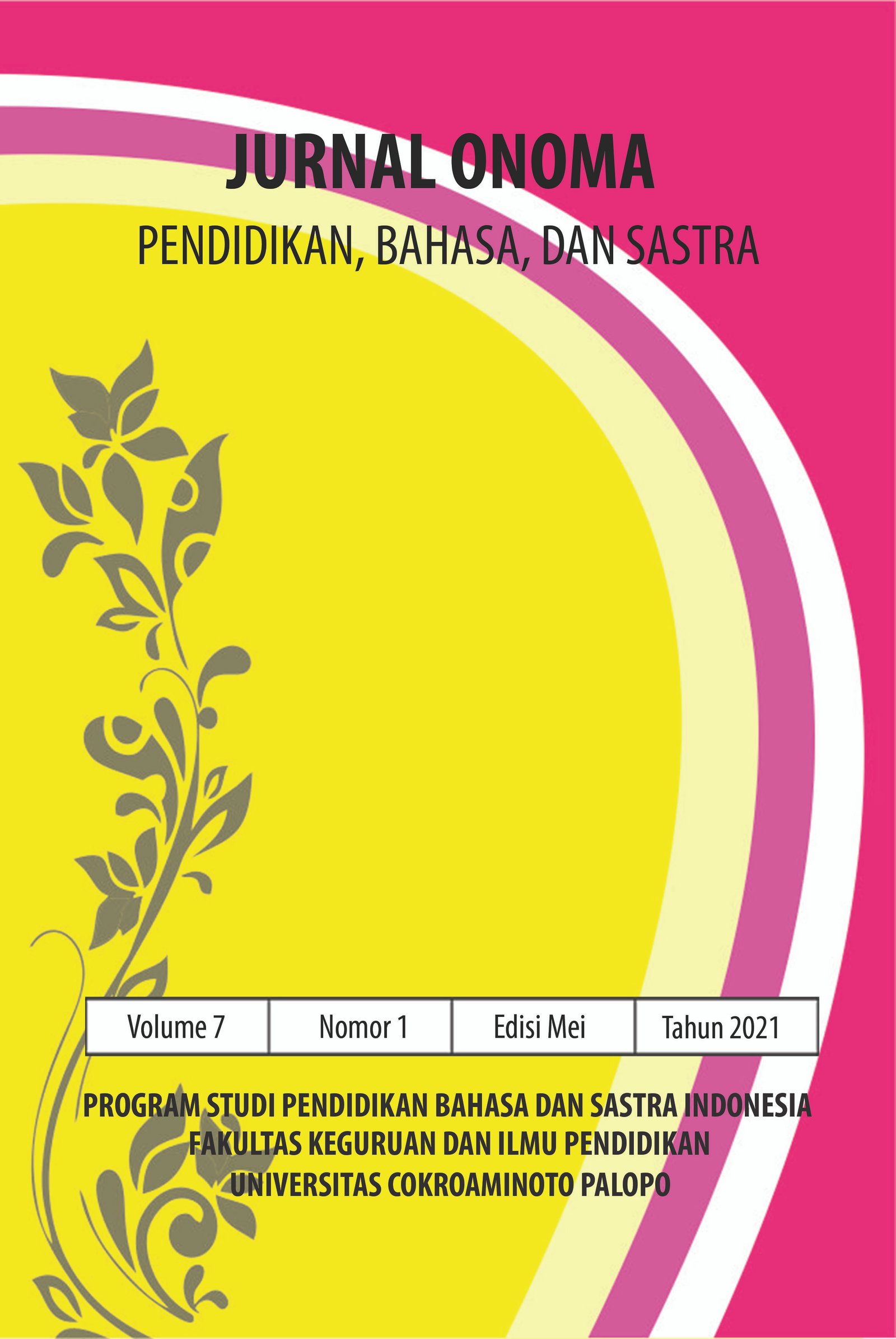Students' Interest in Learning English Vocabulary for Engineering by Using YouTube
https://doi.org/10.30605/onoma.v7i1.1185
Keywords:
interest, YouTube, vocabularyAbstract
YouTube is an application that contains a variety of video content in which there are various kinds of videos, both non-academic and academic. With its ease of use, which only requires web access, YouTube is an application that can be used as a learning medium. Likewise with the level of use among students, it allows YouTube to be a media in learning. In this study, using a qualitative approach through a questionnaire to 14 students of Electronical Engineering at the Akademi Teknologi Industri Dewantara Palopo who were given 20 statements using the Likert Scale, it was found that 11 students (78.57 percent) of the students' high interest, 3 students (21.43 percent) of the students 'very high interest, and none of the students' moderate interest, low interest and very low interest. This shows that student interest in studying on YouTube is very high.
Downloads
References
Burges, J., & Green, J. (2009). Digital Media and Society Youtube: Online Video and Participatory Culture. Polity Press.
Mujianto, Haryadi. (2019). Pemanfaatan Youtube sebagai Media Ajar dalam Meningkatkan Minat dan Motivasi Belajar. Jurnal Komunikasi Hasil Pemikiran dan Penilitian. Vol.5, no. 1, pp. 135-139.
S. Suardi, “Analisis Media Pembelajaran Bahasa Inggris bagi Mahasiswa Teknik ”, djtech, vol. 1, no. 1, pp. 18-21, Feb. 2021.
Sugiyono. (2017). Metode Penelitian Kuantitatif, Kualitatif, dan R&D. Bandung : Alfabeta, CV.
Susilana, Rusi., R.C. (2009). Media Pembelajaran: Hakikat Pengembangan, Pemanfaatan, dan Penilaian. In Media Pembelajaran. CV. Wacana Prima.https://doi.org/10.3168/jds.2017-13062.
Tutiasri, Puspita Ririn., Niko Kurniawan Laminto & Karim Nasri. (2020) Pemanfaatan YouTube sebagai Pembelajaran bagi Mahasiswa di Tengah Pandemi Covid 19. Jurnal Komunikasi, Masyarakat dan Keamanan (Komaskam). 2(2), pp.1-15.
Downloads
Published
How to Cite
Issue
Section
License
In submitting the manuscript to the journal, the authors certify that:
- They are authorized by their co-authors to enter into these arrangements.
- The work described has not been formally published before, except in the form of an abstract or as part of a published lecture, review, thesis, or overlay journal.
- That it is not under consideration for publication elsewhere,
- That its publication has been approved by all the author(s) and by the responsible authorities – tacitly or explicitly – of the institutes where the work has been carried out.
- They secure the right to reproduce any material that has already been published or copyrighted elsewhere.
- They agree to the following license and copyright agreement.
License and Copyright Agreement
Authors who publish with Onoma Journal: Education, Languages??, and Literature agree to the following terms:
- Authors retain copyright and grant the journal right of first publication with the work simultaneously licensed under Creative Commons Attribution License (CC BY 4.0) that allows others to share the work with an acknowledgment of the work's authorship and initial publication in this journal.
- Authors are able to enter into separate, additional contractual arrangements for the non-exclusive distribution of the journal's published version of the work (e.g., post it to an institutional repository or publish it in a book), with an acknowledgment of its initial publication in this journal.
- Authors are permitted and encouraged to post their work online (e.g., in institutional repositories or on their website) prior to and during the submission process, as it can lead to productive exchanges, as well as earlier and greater citation of published work.

















